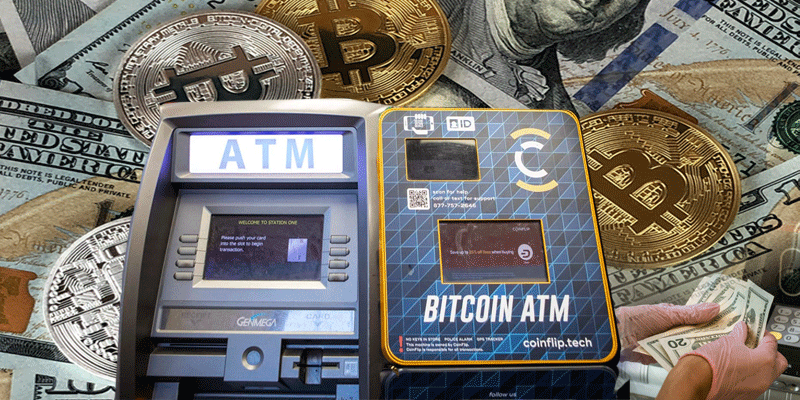Scammers are using Crypto ATMs for fast untraceable money laundering
While investing in cryptocurrency carries a lot of risk and volatility, it’s still legitimate — except for when you’re encouraged to pay a scammer with cryptocurrency of course. In their never-ending quest to find new ways of quickly parting victims from their money, those colorful cryptocurrency ATM kiosks popping up everywhere make for the perfect vehicle for a criminal’s fraudulent payoffs.
You can find crypto ATM kiosks at supermarkets, convenience stores, gas stations, restaurants, liquor stores, and even laundromats all across the U.S. In fact, there are more than 49,000 crypto ATMs in the United States alone, up from only approximately 1,200 in 2017. Most of these ATMs are a legitimate way to convert actual dollars into cryptocurrency (which is not for the cautious investor due to its ever-changing value, and given the hundreds of different cryptocurrencies extant) and are usually licensed and used for their intended purpose. Some of these ATMs, definitely not all, will even warn a customer of potential scams before a transaction.
Scammers love these colorful ATM kiosks because of their strategic locations which easily and quickly help them to defraud victims in government imposter scams, romance scams, grandparent scams, fraudulent online sales, employment scams, lottery scams and a multitude of other evil imaginative scams. A fraudster can move victims’ cash rapidly into tough-to-trace cryptocurrency accounts owned by various criminal enterprises and individuals. This allows the fraudsters to transfer and launder the money in lots of different ways. There are, however, many crypto ATMs that are unlicensed and don’t meet federal registration requirements — these ATMs are often the ones that scammers direct their victims to use.
Because these crypto ATMs look so much like regular ATMs, some victims don’t even realize there’s a difference. A scammer will simply instruct their victim to use the “ATM machine” at a specific convenience store and the victim often doesn’t realize that this is a cryptocurrency ATM and not a regular bank ATM. Scam victims will typically deposit cash in medium to high five figure amounts, which can often take hours to process. A victim might be standing (or sitting) at one of these ATMs for two hours just to deposit $80,000.
What can you do to protect yourself? Just remember that any request to pay via a crypto ATM is a major red flag, and that you are likely the target of a potential scam. Legitimate businesses and government agencies do not ever take payments via cryptocurrency ATMs.
From the FTC:
Scammers use Bitcoin ATMs to steal your money
Most of us use ATMs pretty often to withdraw cash. But Bitcoin ATMs (or BTMs) are a different beast. Increasingly located in convenience or grocery stores, gas stations, and other places, they’re a way to buy or send cryptocurrency. Only scammers are now using BTMs to steal your money. A new FTC Data Spotlight explains how people are losing millions to fraud at BTMs — and how to protect yourself and the people you care about.
From the DFPI:
Crypto ATM Scams: Don’t Let Fraudsters Drain Your Wallet
These machines, commonly found in convenience stores and gas stations, allow users to purchase digital assets using cash or debit cards. However, scammers manipulate victims into using these ATMs to transfer funds directly into the scammers’ crypto wallets.




